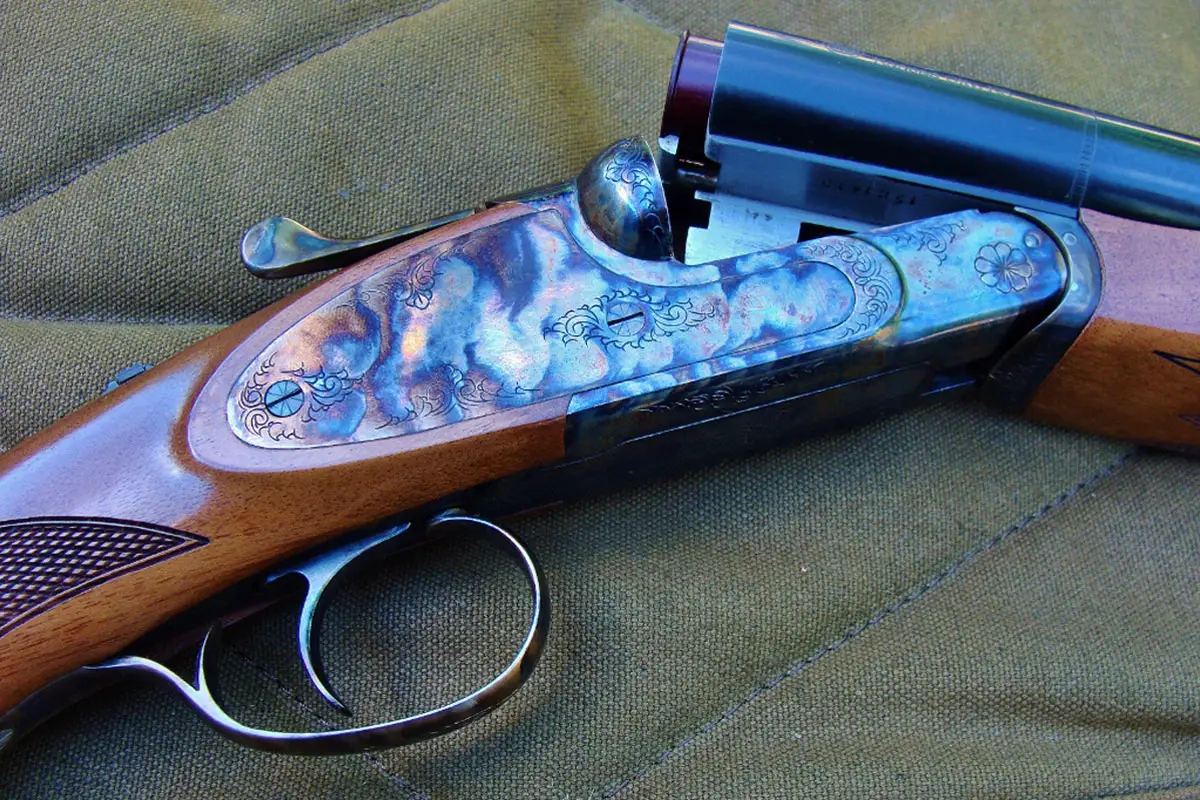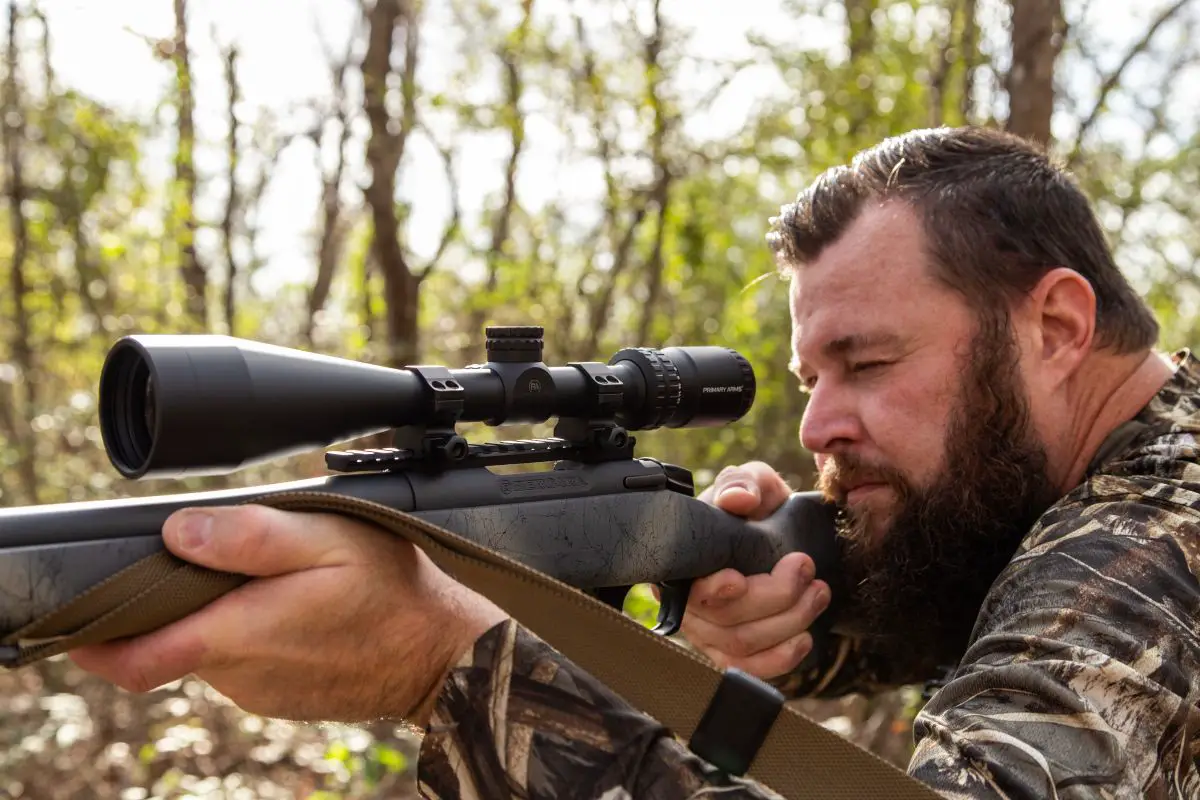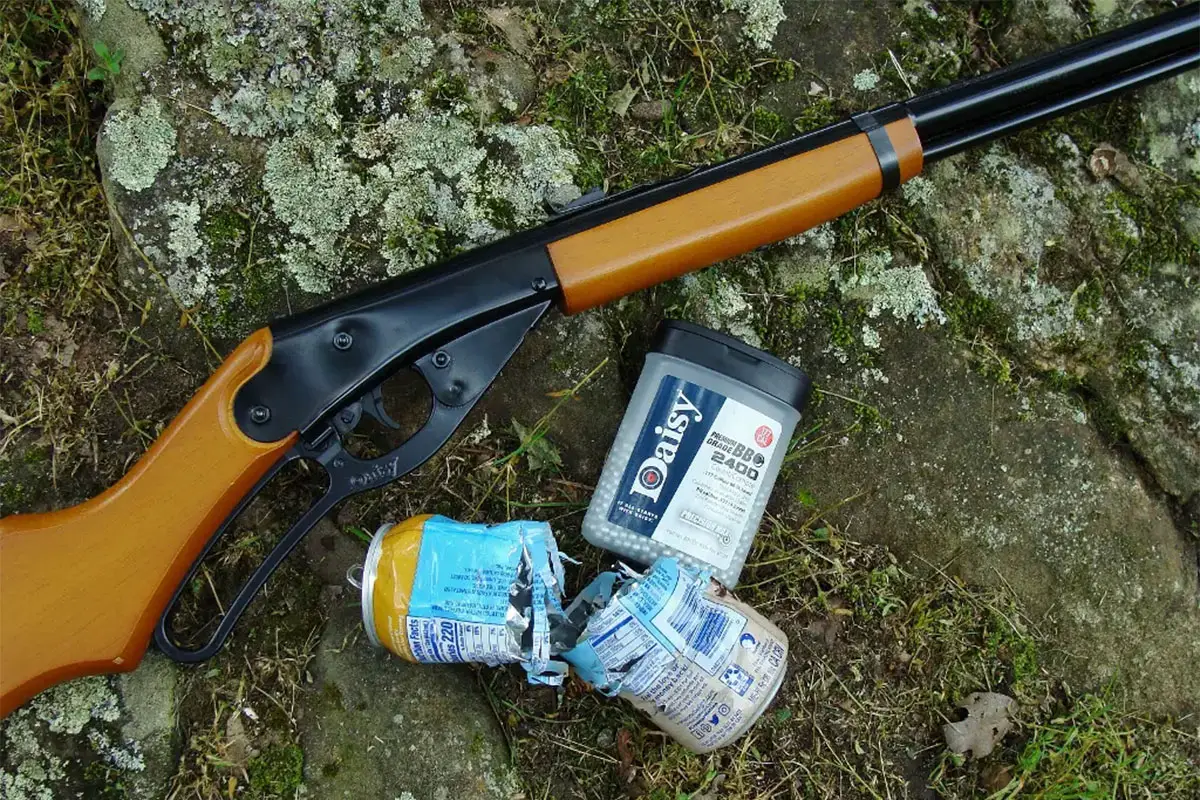3.1K
Different types of actions and gauges
This post on different types of shotguns is for less experienced shooters but it may clarify some murky shotgun details for those with more trigger time. Take “gauges” for example. Even the newest gun owners are likely to grasp the concept of millimeters thanks to the ubiquitous 9mm. Its relationship to other common pistol “calibers” is pretty much a given.
Hence most understand the 10mm Auto is a “bigger” cartridge; large enough to generate more recoil and require a sized-up gun. Same for the relationship of a .223/5.56 NATO cartridge to the more potent .308 Winchester (see .223 vs .308 for an in-depth analysis). The differences are apparent both by numbers and a casual comparison.
Following the same logic, a 12 gauge shotgun “shell” (cartridge) should be larger than a 10 gauge – as should the gun. But that’s not the case.
Actually, the gauge system works the opposite of calibers and millimeters. A 10 gauge shell is larger – as in “fatter” – than a 12 gauge. Could be longer, too. As such, it’ll require a bigger gun – a good thing in light of the mighty ten’s recoil. Some shotgunners take the edge off the kick of a 10 gauge, or stouter 12 ga. loads, by shooting gas-operated autoloaders and other ways to reduce shotgun recoil. Others trade some recoil for the reliability of a pump.
Meanwhile, those outside the bubble may be wondering if they’re burning regular or unleaded – also, which grade “pumps” better. As for the bass-ackwards gauge system, the list includes others, such as the smaller 28 gauge and .410 bore – which is actually a caliber.
Confused yet?
Add to this the various shell-lengths, shot-sizes, weights, powder charges, and pattern-regulating chokes. It’s all about the lingo.
But where to start? Let’s begin with, perhaps, the most overlooked gray area of all – the difference between a rifle and a shotgun!
Shotguns and the Gauge System
I covered this in a previous article, excerpted here to explain the differences.
“The conversation begins with the difference between a rifle (or handgun), and “smoothbore” shotgun.
Rifles are designed to fire single projectiles dependent on precise barrel engagement and gyroscopic stability to prevent the erratic effects of bullet tumbling. The bullet’s nose-forward flight is maintained through “rifling”; a series of spiral grooves cut into the bore’s surface that correspond with the diameter of the bullet – its “caliber.”
The need to “gauge” projectiles to their barrels predates rifling, and the smoothbore system – used for shotguns – was based on weight. Nowadays a quarter-pounder equals a substantial dose of cholesterol, but in years gone by, an energetic shoulder-fired example provided a means to passive ponderous pachyderms – for those with the fortitude to endure its Newtonian effects.
In spherical form its lead projectile, if “gauged” to slip through the bore, would weigh 4-ounces. At four-to-the-pound, per the British “Gauge “system, it would thus be classified as a four-bore – or 4-Gauge. The “smaller” but still formidable 8-bore was the upper limit for most shooters. Thankfully, these massive spheres eventually gave way to lighter large-caliber bullets, stabilized by rifled barrels. But the gauge system endured for smoothbore shotgun barrels intended to shoot multiple projectiles known as shot pellets.”

So, there’s the explanation of a “shotgun.” Some are produced with rifled bores for the express purpose of shooting “slugs” (solid bullet-like projectiles), but they occupy a specialty-niche reserved primarily for big game (mainly in shotgun-only areas). The vast majority are true “shotguns,” sold in several popular actions and gauges.
More About Gauges
Today’s largest common “gauge” is the 10, although the 12 ga. is more popular and versatile. In their descending sizes, the others are 16, 20 (next most popular), 28, and the tiny .410-bore. All except the 16 are also available as “magnums,” lengthened versions with increased payloads – and recoil.
The standard length of a 12 ga. shell is 2 ¾-inches. A feistier 3-inch magnum can shoot a heavier payload, but these loads are only safe when fired in a 3-inch chamber. For this reason, in accordance with industry standards, today’s shotguns display the gauge and chamber length.

The good news: If your barrel is stamped, say, 12 ga. 2 ¾” or 3” (increasingly common), it can safely fire either load. This capability provides much greater versatility, especially if the gun will function with lighter loads. But that may be dependent on the design of the shotgun – its action – the subject we’ll examine next.
5 Common Shotgun Actions
A number of novel shotgun designs have appeared over the years, and some remain in production. That’s also true of ammunition – but good luck locating a box of 32 gauge or 9mm rimfire shotshells. Same for repairs and parts. The guns you’ll see here are much more common, the types a prospective owner would be likely to encounter. And the list kicks off with the simplest of all.
Single-shot Break-barrel Designs
Peruse the local gun shop and you’ll likely encounter some type of break-barrel shotgun in the “used” rack, possibly for an affordable price. These guns are simple designs and also ambidextrous. Active controls typically consist of just a barrel-latch and external hammer. Manipulation of the latch (usually a small lever) releases the barrel, allowing it to pivot muzzle-down, for easy access of the chamber.
To load, insert a shell and swing the barrel shut. When ready to fire, cock the hammer and press the trigger. Depending on the design, the fired shell could require manual extraction, or be kicked clear by an automatic ejector. One somewhat fiddly concern is safe lowering of a cocked hammer; required if the immediate shot is no longer forthcoming.

Produced in large quantities by a number of manufacturers in the common gauges, with the exception of a few higher-end competition (trap) models, nearly all are pedestrian examples – which doesn’t rule out their usefulness. They’ll fire nearly any load with no concerns over reliability – and money left over for shells.
And, once their hammers are mastered, they’re relatively safe. Pop the action open and you can tell at a glance if the gun is loaded. For more info, here’s a link that discusses gauges, shell options and useful single shot shotguns.
A couple “kickers” are their light weight, which can exacerbate recoil – and only one shot. Also, today’s current choices are somewhat limited. Lots of good used guns though, built by H&R, New England Arms, etc.
Double Guns
This category encompasses side-by-side (SxS), and over & under (O/U) designs. These guns employ hinged actions that operate similarly to the above single shots, but nearly all have internal hammers.

Side-by-side. Even most non-shooters can envision a “double-barreled shotgun,” the classic double-gun. Extremely popular during the post-Civil War period, by the late 1800s external “hammer guns” had given way to enclosed “hammerless” designs. During this era doubles were mainstay choices for defense, subsistence or sporting purposes, and their barrels provided two “choke” options (muzzle constrictions applied to regulate shot patterns).
But the appearance of reliable magazine-fed repeaters during the early 1900s led to a rapid decline in SxS sales. Today’s pickings are still lean, and nearly all come from offshore sources of varying quality. The original two-trigger design should provide greater reliability due to its independent firing mechanism. Single-trigger versions (my preference) are also available, but their complexity makes them a better choice for pricier guns.

Over & Under. This design, which caught on during the 1930s, accounts for the vast majority of today’s double gun sales. The single sighting plane of an O/U is considered a plus and the design offers a few other advantages for competitive target shooters and upland bird hunters. Two choke options are immediately available, and a properly balanced double (of either type) can be a joy to handle. Many are equipped with barrel-selectors, auto-ejectors, and auto-reset safeties (common among field guns).

Double guns are relatively safe (and ambidextrous) designs that can fire a wide variety of loads – with a fast second shot through two different chokes. But expect to get what you pay for. Beyond concerns over quality, some bargain-priced offerings handle more like truck axles and may have poorly regulated barrels. I’m still a sucker for a well-built double gun, but additional shots and greater utility are available for less money through a basic pump.
Slide-actions – or Pumps
The appearance of Winchester’s Model 1897 “slide-action repeater” opened a new chapter in shotguns. Its reciprocating breech bolt fed shells to the chamber from a tubular magazine below the barrel. A sliding forend powered the bolt through the “pumping” action of the shooter. The M-97 featured an external hammer, but enclosed-hammer designs (like Winchester’s Model 12) soon followed.
The increased firepower (dictated by the length of the magazine), combined with reliability and affordable costs, led to sales by the million. Produced since 1950, Remington’s Model 870 alone accounts for eleven million (still going). Like many other designs, its standard capacity is 4 +1 (including the chamber). Some may be “plugged” to 2 +1, per federal waterfowl regs, but can be easily reversed.

Most pumps are user-serviceable, and many will accept spare barrels suitable for sporting, homesteading, or defensive purposes. Available with interchangeable chokes, in nearly all of the popular gauges, most will also fire magnum shells. As a whole, they’re reliable, load-friendly, and priced within the reach of many shooters. Safe operation (loading and unloading) does require some practice, and most aren’t completely ambidextrous, but LH versions are available.
Semiautomatics (autoloaders)
The same genius of John Browning, that gave us the Model 1897 Pump and Superposed Over & Under, also provided a successful gateway to semiautomatic shotguns. Still in use today, Browning’s recoil-powered design is one of three commonly encountered actions. Like pumps, they feed via tubular magazines, but are referred to as “autoloaders” because their bolts reciprocate automatically. Each shot – one per trigger pull – initiates the sequence, eliminating the need for manual cycling.
Long-recoil Browning’s original circa-1905 Auto-5 “humpback” design; the bolt is cycled through direct contact with the barrel, driven rearward through the energy of a discharged shell. This action also compresses springs used to complete the cycling sequence. Eventually, other manufacturers marketed streamlined receivers without the telltale hump, some of which evolved to “gas-guns” – that generated less recoil.

Gas-operated. The introduction of Remington’s Model 1100 during 1963 sparked a new era of softer-shooting autoloaders. Recoil was reduced by a stationary barrel, with small ports, that redirected ignition pressure – gas – against a piston, which drove the bolt-assembly. This sequence staged the recoil impulse, providing a perceived reduction – and the design ran reliably with reasonable maintenance.
The Model 1100 was sold in 2 ¾” or 3” Magnum versions, but introduction of Remington’s M-1187 (in 1987) set the stage for an autoloader that could fire both types interchangeably. Today, this capability is much more common. Many current gas guns will digest a wide range of shells from light target loads to the heaviest magnums.

Inertial. Benelli popularized this design, which greatly simplifies function and maintenance. No reciprocating barrel or gas system; instead, the action cycles via a two-piece bolt assembly with a stout spring sandwiched in between. The effects of recoil lock a separate bolthead to the chamber until pressure subsides; at which point the inertially-compressed spring takes over, driving the whole assembly rearward. Like other autoloaders, the bolt completes the feeding cycle through the decompression of a stout recoil spring, but gas-related fouling is conspicuously absent.

Autoloading shotguns function through a balance of recoil (or pressure) Vs springs. And, as a whole, they work remarkably well with suitable (as in recommended) loads – and a proper cleaning regimen. Most that quit suffer from neglect. Gas guns are usually the softest shooters. Inertial guns can be snappier, but some with shock-absorbing stocks (like those from Benelli) are nearly as comfortable – a lot more so than the original long-recoil designs. Browning’s latest A-5 has the familiar hump but is now inertial.
Others
This category covers “tactical” pumps (KSGs and S&Ws) and AR or AK-type semiautos, along with sporting-type combination-guns (rifle/shotgun), bolt-actions, lever-actions – and even revolvers. Some have value for specialty purposes but there are better one-gun, general purpose, choices.
Parting Shots

I shoot a smattering of double guns, but my mainstay shotguns are autoloaders – Beretta gas guns chosen to minimize recoil without compromising reliability. But if I could only own one gun? It would have to be a basic pump; a 3” 12 Gauge, if possible, with a spare barrel. If you choose a Reming 870, it’s quite easy to turn it into a tactical shotgun if you choose to later.
Go this route and everything that flies, crawls or walks is fair game within reasonable distances – certainly out to 100-yards with a well-aimed slug. I’d go with a Remington Model 870 Express equipped with a 26 or 28” bird barrel, and spare rifle-sighted slug barrel.
But that’s just me, based on extensive professional experience with a large inventory of these time-tested shotguns. There are certainly other great picks from Mossberg, etc. And they’ll run with just about anything you can stuff in ‘em.

More Mysteries?
Get a handle on the myriad load possibilities and you’re off to the races. As it turns out, there are even regular and “unleaded” options. But, given the related vernacular, sorting out the details can be confusing, so here’s a start:
Shotgun Shot Sizes and Drams Explained (shtfblog.com)
Next up recoil; a legitimate concern for some prospective shotgunners, especially in the larger gauges. But again, solutions are available. This link is all about kick:
5 Easy Ways to Reduce Shotgun Recoil (shtfblog.com)
As for chokes, standby: They’ll be covered in an upcoming post. Meanwhile, for more about shotguns (including the topics covered above), here’s a link to Shotguns: A Comprehensive Guide:
Source link: https://survivedoomsday.com/types-of-shotguns/ by Steve Markwith at survivedoomsday.com





